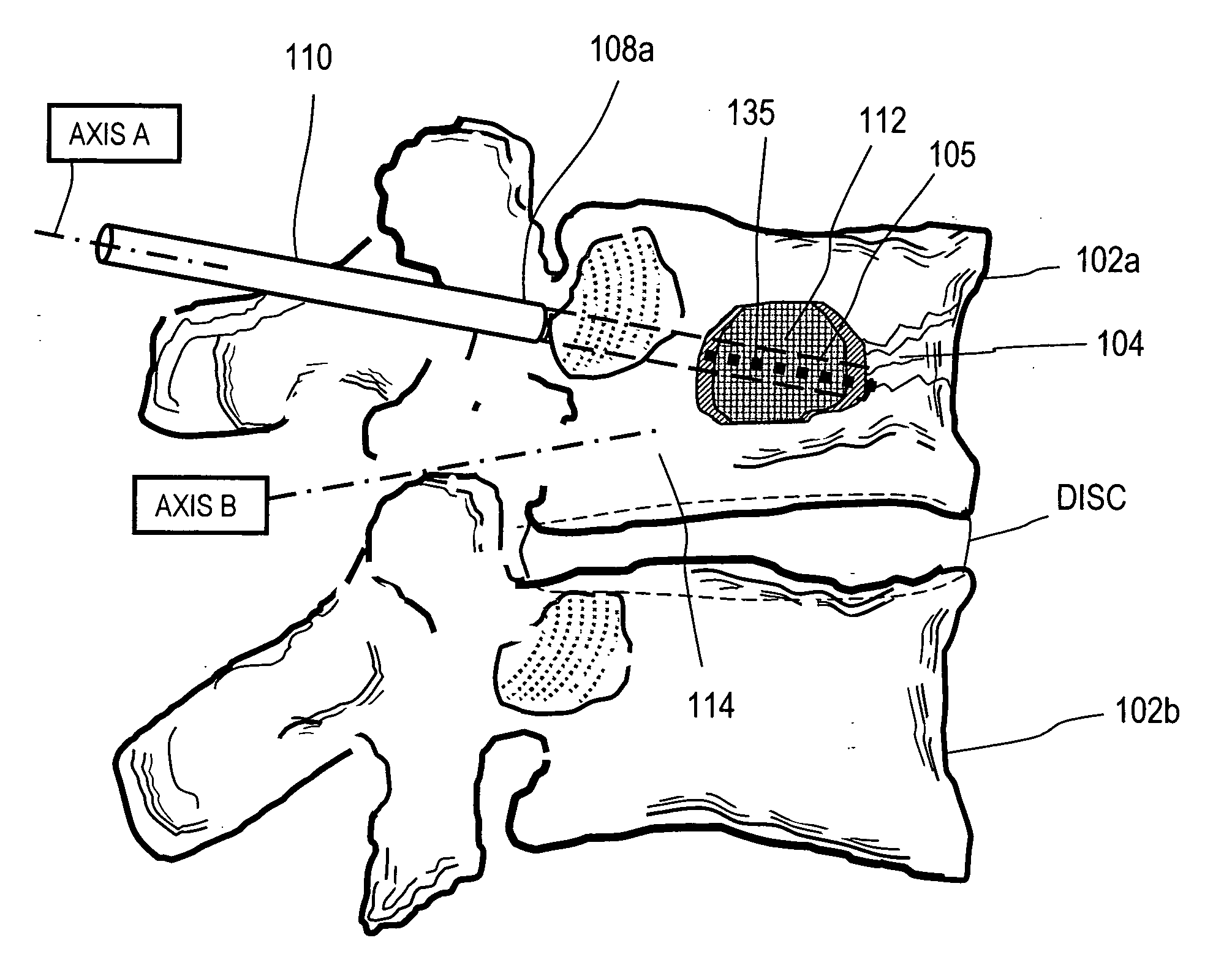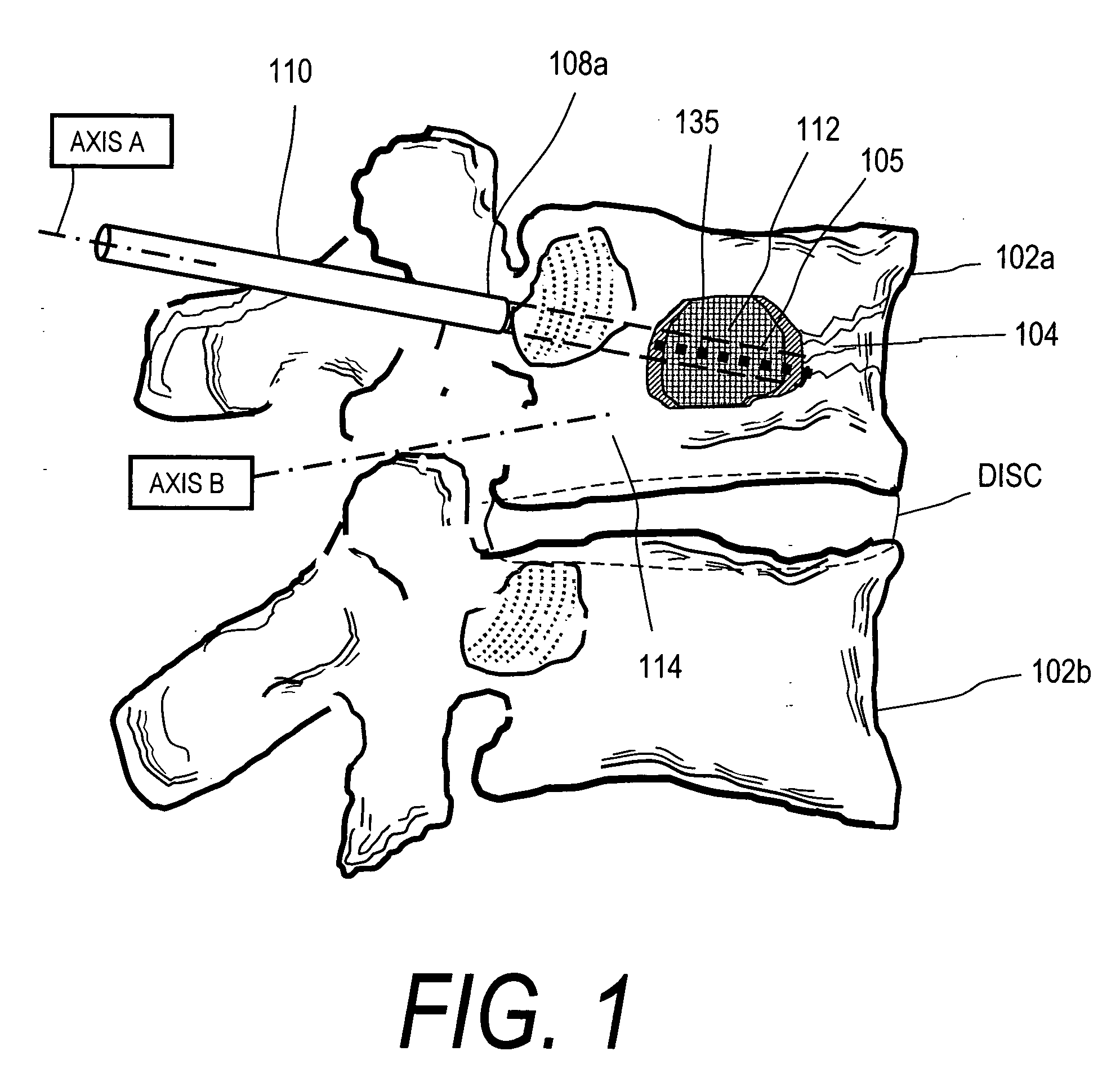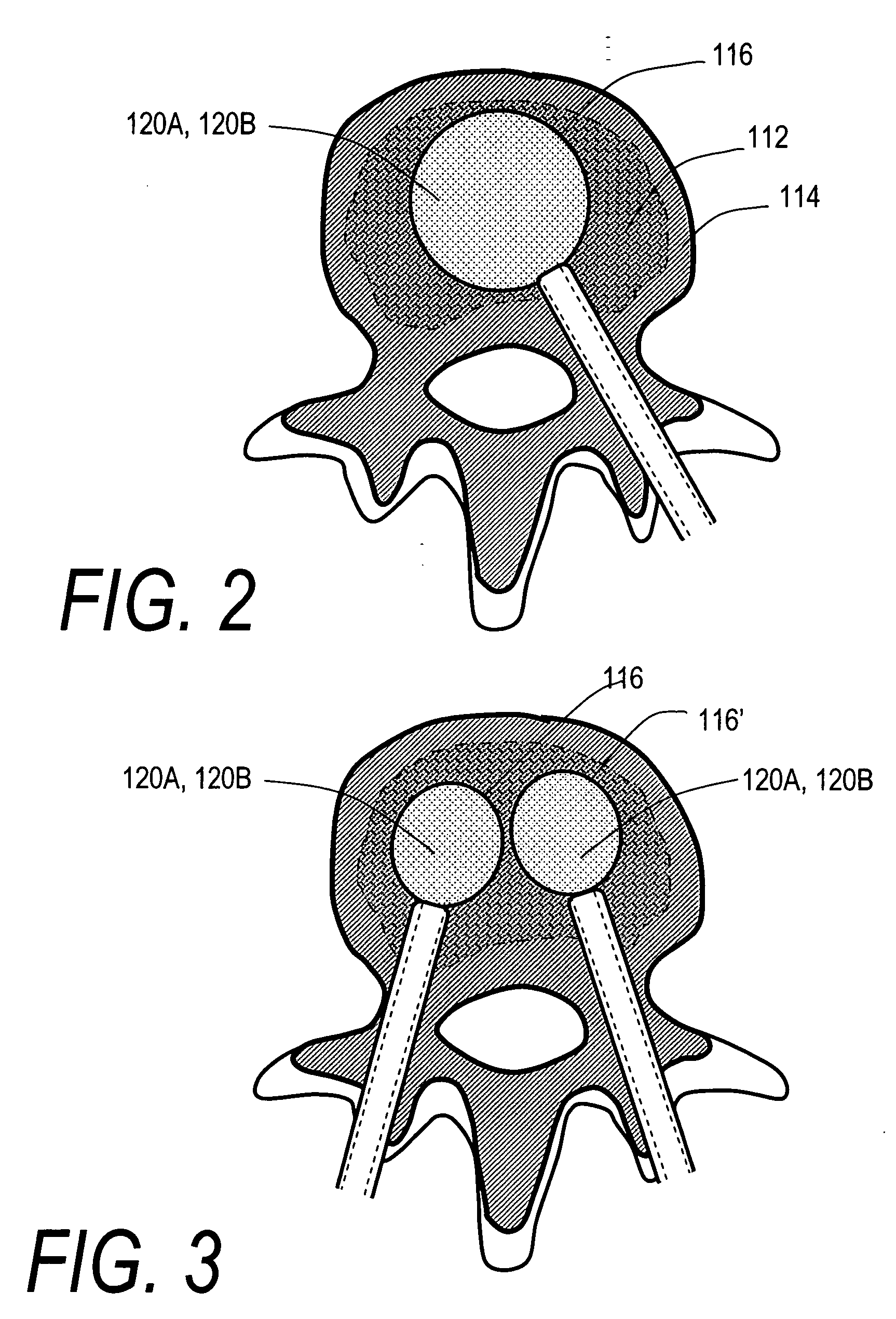Bone treatment systems and methods
a bone treatment and bone technology, applied in the field of medical devices, can solve the problems of fractures in the spine and hips, affecting mobility and quality of life, and the medical advances aimed at slowing or arresting bone loss from aging have not provided solutions to this problem, so as to achieve a greater degree of control over the introduction of bone support materials and improve outcomes
- Summary
- Abstract
- Description
- Claims
- Application Information
AI Technical Summary
Benefits of technology
Problems solved by technology
Method used
Image
Examples
Embodiment Construction
[0031] In FIG. 1, it can be seen that vertebral body 102b has a wedge vertebral compression fracture (VCF) indicated at 104 and the methods of the invention are directed to safely introducing a bone cement into cancellous bone to eliminate pain and to reduce the fracture. Vertebral body 102a is susceptible to a VCF following treatment of the fractured vertebra 102b since biomechanical loading will be altered. The present invention includes systems for prophylactically treating a vertebra that is adjacent to vertebral compression fracture, as well as for the treating the fractured vertebra.
[0032]FIG. 1 illustrates an initial step of a method of the invention wherein the distal working end 105 of an elongate introducer 110 is introduced through the saddle of pedicle 108a for penetration along axis A into the osteoporotic cancellous bone 112. It should be appreciated that the instrument also can be introduced into the vertebra in an extrapedicular approach, for example, through the co...
PUM
 Login to View More
Login to View More Abstract
Description
Claims
Application Information
 Login to View More
Login to View More - R&D
- Intellectual Property
- Life Sciences
- Materials
- Tech Scout
- Unparalleled Data Quality
- Higher Quality Content
- 60% Fewer Hallucinations
Browse by: Latest US Patents, China's latest patents, Technical Efficacy Thesaurus, Application Domain, Technology Topic, Popular Technical Reports.
© 2025 PatSnap. All rights reserved.Legal|Privacy policy|Modern Slavery Act Transparency Statement|Sitemap|About US| Contact US: help@patsnap.com



